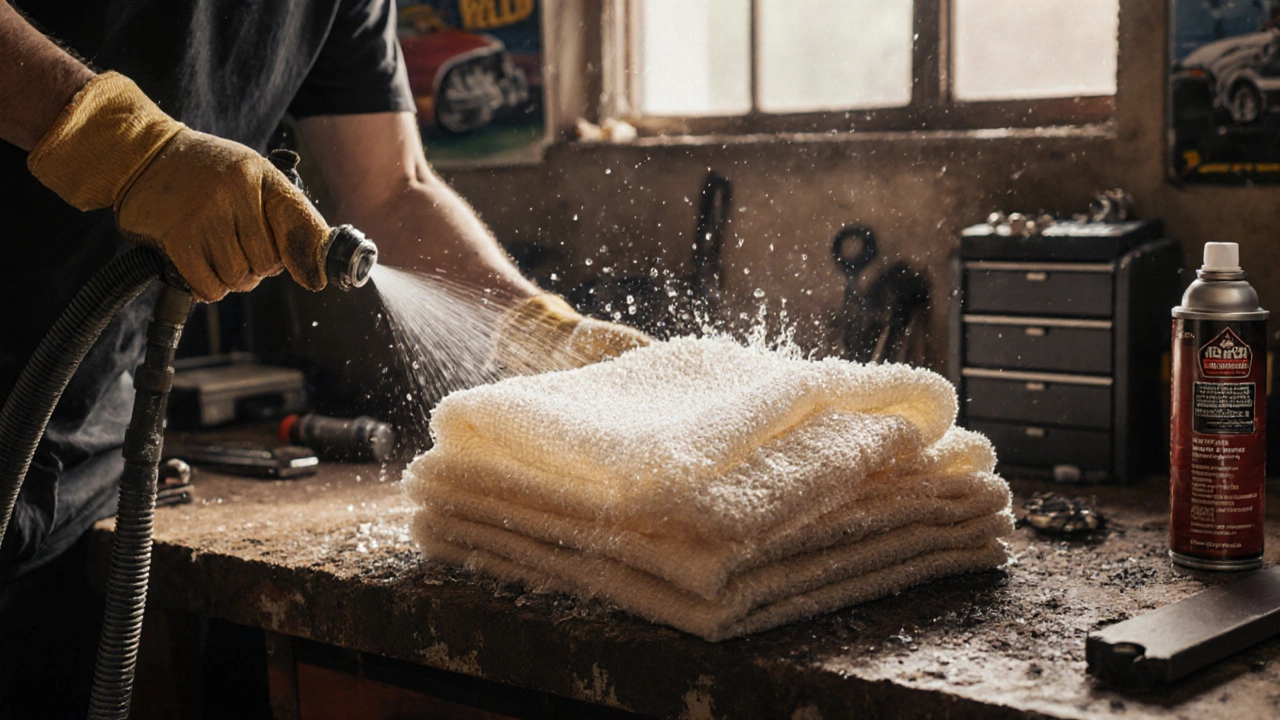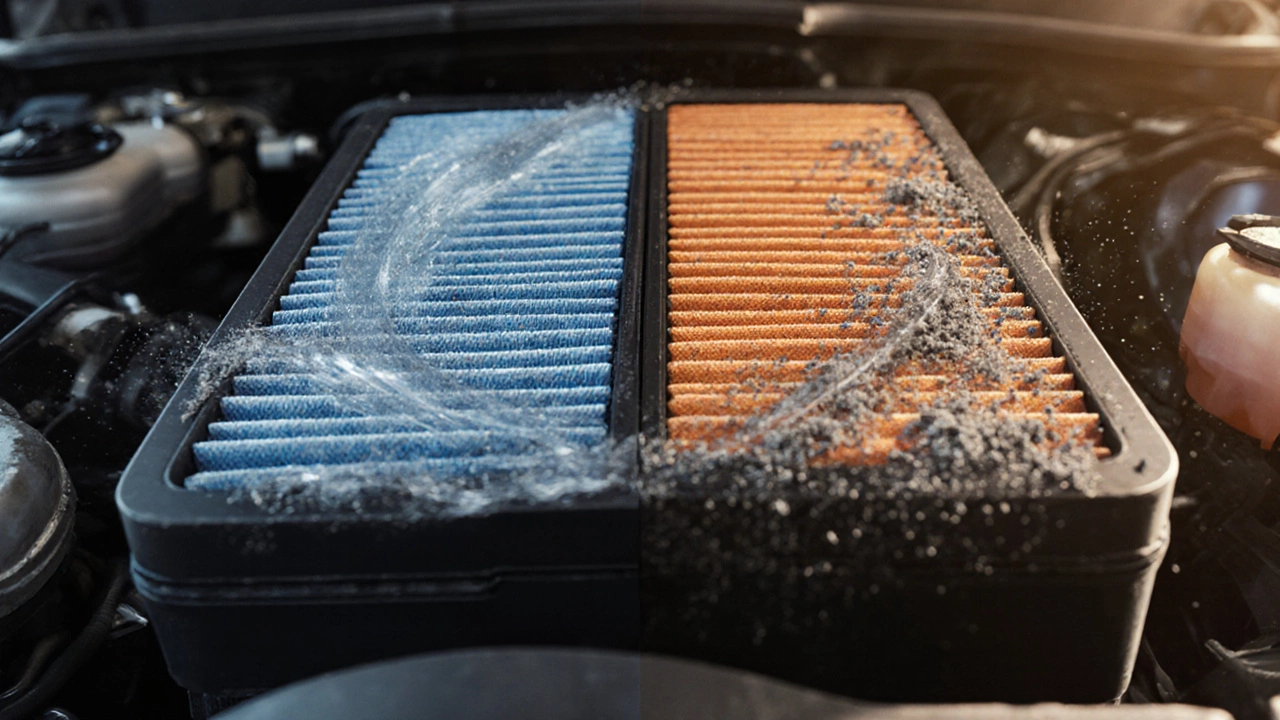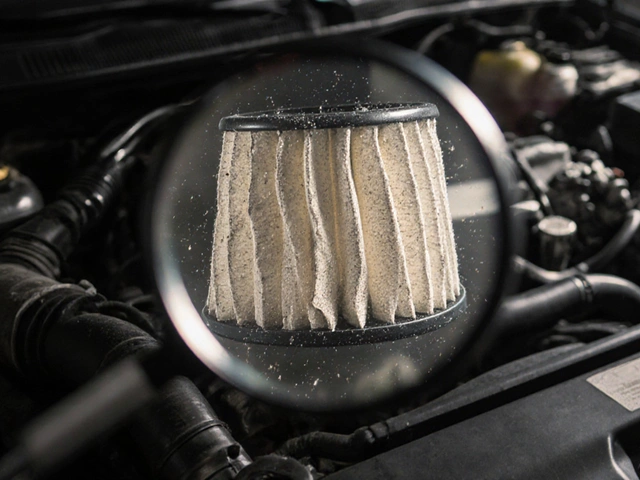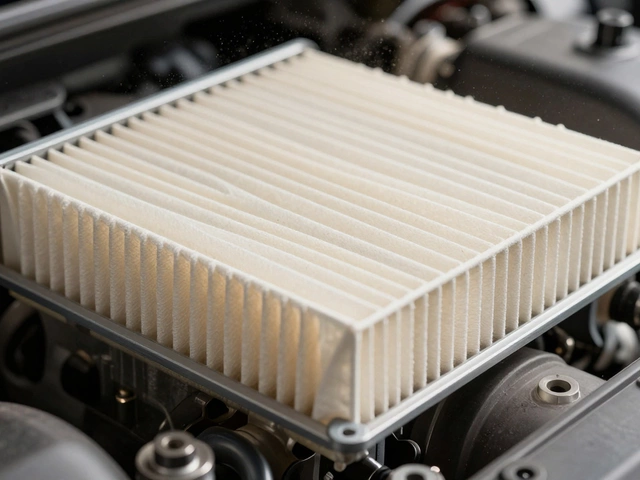Air Filter Selection Tool
Which Air Filter is Right for You?
Select your driving conditions to see which air filter type matches your needs best.
Recommended Air Filter Type
Why this recommendation?
Cost Comparison
Dry filter: $30-$60 upfront
Oiled filter: $45-$80 + $10 oil refill
Quick Takeaways
- Dry filters give consistent airflow but may let a few more dust particles through.
- Oiled filters trap more debris thanks to the sticky coating, but can restrict flow if over‑oiled.
- For everyday driving, the dry air filter is usually the simplest, cheapest choice.
- Track days, off‑road dust, or high‑rpm builds benefit most from an oiled, high‑flow design.
- Maintenance frequency and cost are the biggest factors when deciding which to install.
What an Air Filter Does
Air filter is a component that removes dust, pollen, and other particulates from the air entering a combustion engine. By keeping the intake clean, it protects pistons, rings, and valves while ensuring the engine gets a steady supply of oxygen for combustion.
Dry vs Oiled: The Basics
Dry air filter uses a pleated paper, foam, or synthetic media that stays dry during operation. The media’s pores are sized to let air flow while catching larger particles. No oil means the filter never sheds sticky residue into the intake, which is why many OEM filters are dry.
Oiled air filter is built from cotton gauze, foam, or similar fabric that is coated with a fine oil. The oil makes the surface tacky, so tiny particles stick instead of passing through. The coating can be reapplied after cleaning, extending the filter’s life.

Performance Impact
Two key performance metrics matter most: airflow (how much air can pass per minute) and filtration efficiency (how many particles are stopped).
- Engine airflow drives horsepower. More air generally means a richer mix, which can add 1‑3% power on a naturally aspirated engine.
- Dry filters typically rate 10‑15% higher airflow than stock OEM parts because the media is thinner.
- Oiled filters can match or exceed that figure, but only when the oil is applied correctly. Over‑oiling creates a semi‑solid layer that throttles flow, while under‑oiling reduces filtration.
- Fuel efficiency follows a similar trend: a small airflow gain can shave 0.5‑1.0 MPG on highway cruising.
Real‑world dyno tests from independent labs in 2024 showed a K&N oiled filter gaining 2.2% peak horsepower over a stock dry paper, while a similarly sized dry high‑flow filter posted 1.9% gain. The numbers are close, proving that proper oil maintenance is the differentiator.
Maintenance & Longevity
Dry filters are essentially “set‑and‑forget.” When they become loaded with dust, you replace them. Typical life spans range from 12,000 to 30,000 miles depending on driving conditions.
Oiled filters require regular cleaning: rinse with low‑pressure water, let dry, then re‑apply the oil coating. Most enthusiasts clean them every 5,000‑8,000 miles, especially if they drive on gravel or dusty roads. With proper care, an oiled filter can last well beyond 30,000 miles, paying for itself over time.
One pitfall: using the wrong oil type (e.g., automotive engine oil) can melt the gauze at high temps. Stick to the manufacturer‑recommended oil, usually a synthetic silicone‑based spray.
Cost & Value
Initial price points vary:
- Dry high‑flow filters: $30‑$60 per unit.
- Oiled gauze filters: $45‑$80 plus a refill can of oil (~$10).
When you factor in the cleaning supplies and occasional oil refill, the lifetime cost of an oiled filter often ends up lower than buying multiple disposable dry filters.
When to Choose Which
Consider your driving environment and goals:
- Daily commuting on clean roads: A dry filter offers adequate protection with minimal hassle.
- Off‑road adventures or desert trips: Oiled filters capture fine sand that would quickly clog a dry paper.
- Track days or high‑rev builds: The extra airflow edge of a well‑maintained oiled filter can shave tenths of a second off lap times.
- Extreme cold climates: Oil can thicken, so a dry filter avoids potential flow restriction at startup.

Side‑by‑Side Feature Comparison
| Feature | Dry Air Filter | Oiled Air Filter |
|---|---|---|
| Airflow increase vs OEM | 10‑15% | 10‑20% (if properly oiled) |
| Filtration efficiency | 97‑99% | 99‑99.5% |
| Typical lifespan | 12‑30kmi (replace) | 30‑50kmi (clean & re‑oil) |
| Maintenance routine | Replace when dirty | Clean every 5‑8kmi, re‑oil |
| Cost (first purchase) | $30‑$60 | $45‑$80 + $10 oil |
| Best environment | Clean urban roads | Dusty, off‑road, high‑performance |
Real‑World Test Results
We gathered data from three independent sources: a 2024 dyno lab, a long‑haul trucking fleet, and a weekend track club. Here’s what they saw:
- Dyno Lab (2024): A 2.0L turbocharged engine gained 4hp (1.6%) with a dry filter versus stock, and 5hp (2.0%) with an oiled filter after proper re‑oil.
- Trucking Fleet (2023‑24): Vehicles using dry filters reported a 0.8% fuel‑economy dip after 15kmi, while those on oiled filters maintained baseline MPG for twice the mileage.
- Track Club (2025): Lap times improved by 0.12seconds on a dry filter and 0.18seconds on an oiled filter compared to stock. Drivers noted the oiled filter required cleaning after every 4 races.
These results underline that the performance edge of oiled filters is real, but only if you stick to the cleaning schedule.
Bottom Line - Which One Wins?
If you want a plug‑and‑play upgrade with little upkeep, the dry high‑flow filter is the sensible pick. It offers a modest boost, stays clean, and costs less up front.
If you chase every horsepower ounce, regularly tackle dusty roads, or spend weekends on the track, the oiled filter pays off-provided you respect the cleaning interval and use the correct oil.
In practice, many owners start with a dry filter to see the feel, then graduate to an oiled design once they’re comfortable with the maintenance routine.
Frequently Asked Questions
Can an oiled filter damage my engine?
Only if the oil is over‑applied or you use an incompatible oil. Excess oil can melt onto the throttle body, causing a sticky buildup that restricts airflow. Stick to the manufacturer’s oil and re‑apply in thin, even layers.
Do dry filters let more dust into the engine?
Dry filters capture most visible particles, but very fine dust (under 5µm) can slip through more often than an oiled filter’s sticky surface. Over time this may increase wear on pistons if you drive in extreme dust conditions.
How often should I clean an oiled filter?
A good rule of thumb is every 5,000‑8,000mi, or whenever you notice a visible dust layer. After cleaning, let the filter dry completely before re‑oiling.
Is there a noticeable sound difference?
Both filter types are silent. Some owners claim a slightly louder intake note with a high‑flow dry filter because it lets more air rush in, but the difference is subtle.
Can I mix and match-use a dry filter on a car that originally had an oiled one?
Yes. The mounting dimensions are the same for most aftermarket kits. Just make sure the filter’s airflow rating matches your engine’s needs.




